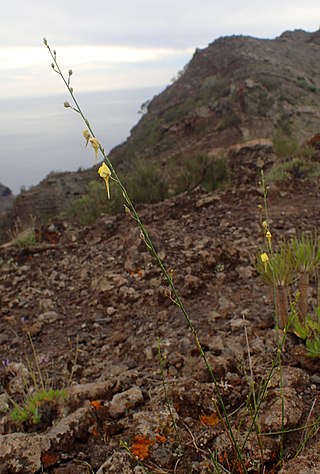
Nepeta is a genus of flowering plants in the family Lamiaceae. The genus name, from Latin nepeta (“catnip”), is reportedly in reference to Nepete, an ancient Etruscan city. There are about 250 species.

Onobrychis, the sainfoins, are a genus of Eurasian perennial herbaceous plants of the legume family (Fabaceae). About 206 species are presently accepted. The Flora Europaea lists 23 species of Onobrychis; the main centre of diversity extends from Central Asia to Iran, with 56 species – 27 of which are endemic – in the latter country alone. O. viciifolia is naturalized throughout many countries in Europe and North America grasslands on calcareous soils.

Scorzonera is a genus of flowering plants in the tribe Cichorieae within the family Asteraceae.

Isatis is a genus of flowering plants in the family Brassicaceae, native to the Mediterranean region east to central Asia. Its genus name, Isatis, derives from the ancient Greek word for the plant, ἰσάτις. The genus includes woad. Due to their extremely variable morphology, the Asian species in particular are difficult to determine; the only reliable diagnostic feature is the ripe fruit. They are (usually) biennial or perennial herbaceous plants, often bluish and hairless or downy hairy with the upright stem branched.

Hedysarum (sweetvetch) is a genus of the botanical family Fabaceae, consisting of about 200 species of annual or perennial herbs in Asia, Europe, North Africa, and North America.

Nanorrhinum is a genus of flowering plant in family Plantaginaceae.

Seseli is a genus of herbaceous perennial plants in the family Apiaceae. They are sometimes woody at base with a conic taproot. Leaf blades are 1–3-pinnate or pinnately decompound. Umbels are compound, with bracts few or absent. Petals are white or yellow, and the fruit ovoid or ellipsoid.

Prangos is a genus of flowering plants of the family Apiaceae, native from Europe to Mongolia and the western Himalayas.

Eremogone is a genus of flowering plants in the family Caryophyllaceae, native to western North America, northern Asia, eastern Europe and northeastern Africa. Attempts to resolve taxonomic relationships within the Caryophyllaceae have resulted in the enlargement of Eremogone with species from other genera.
Semenovia is a genus of flowering plants belonging to the family Apiaceae. It is in subfamily Apioideae and also tribe Tordylieae subtribe Tordyliinae.










